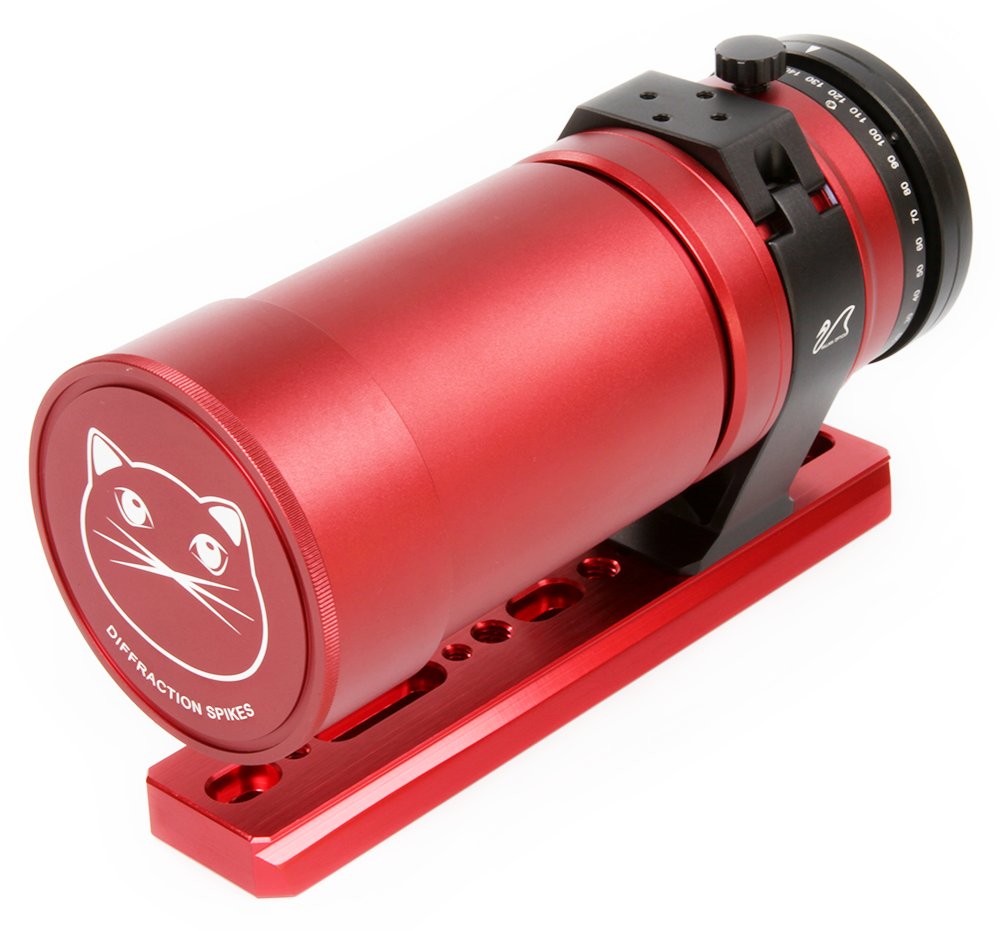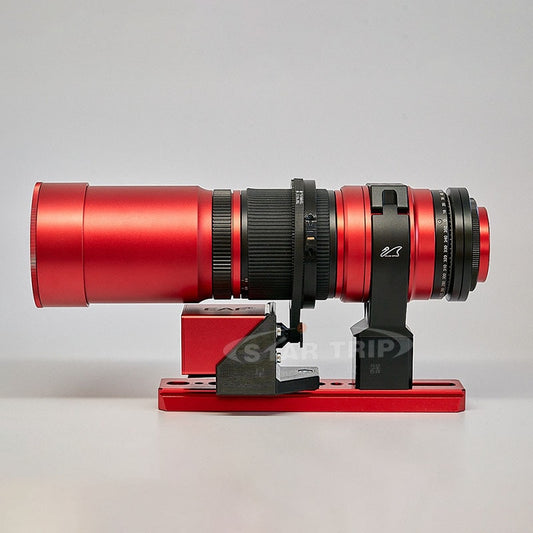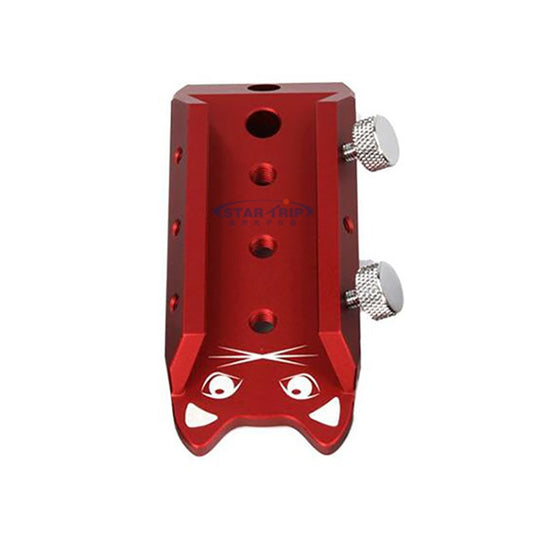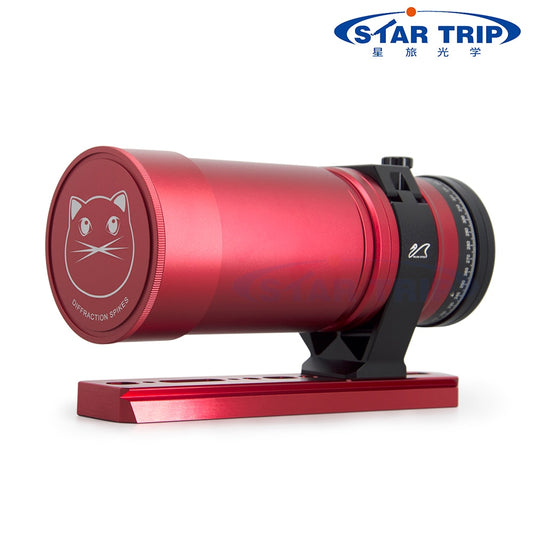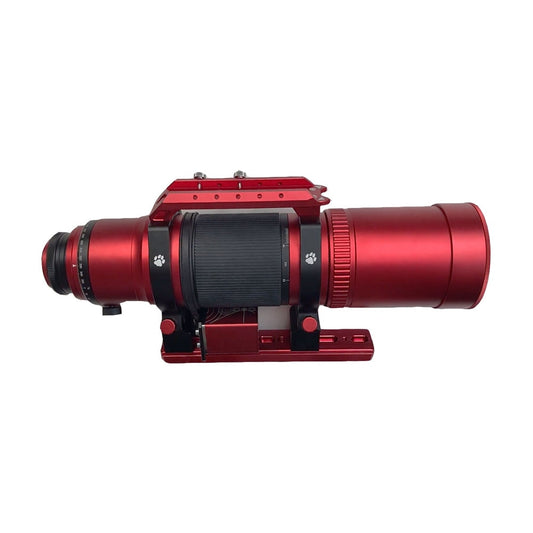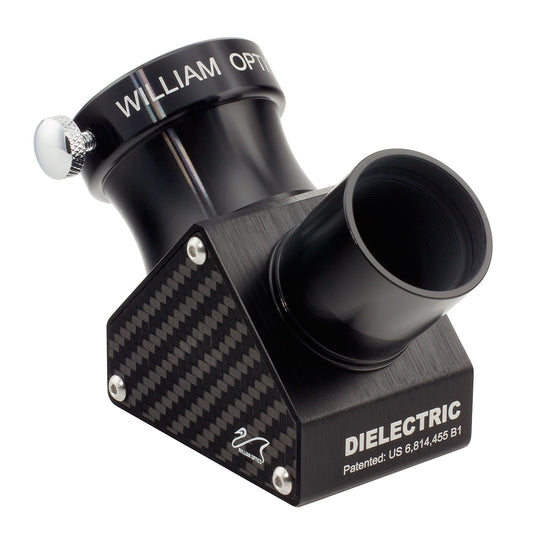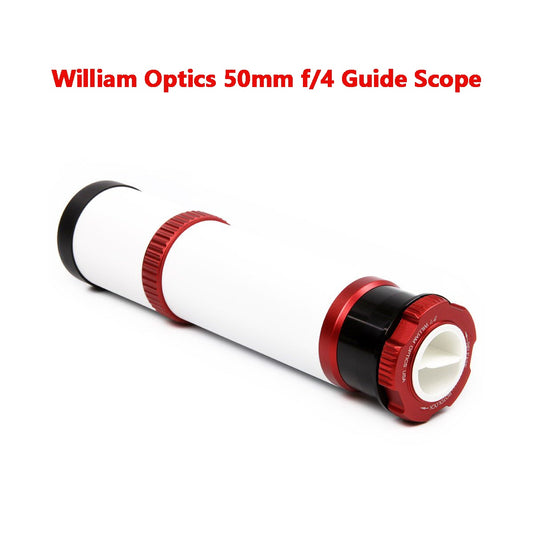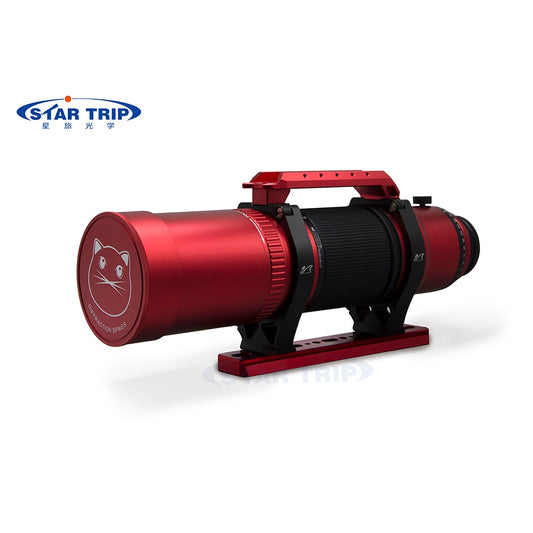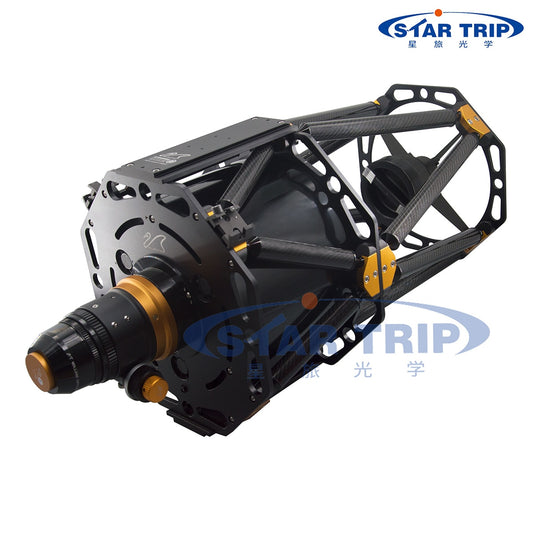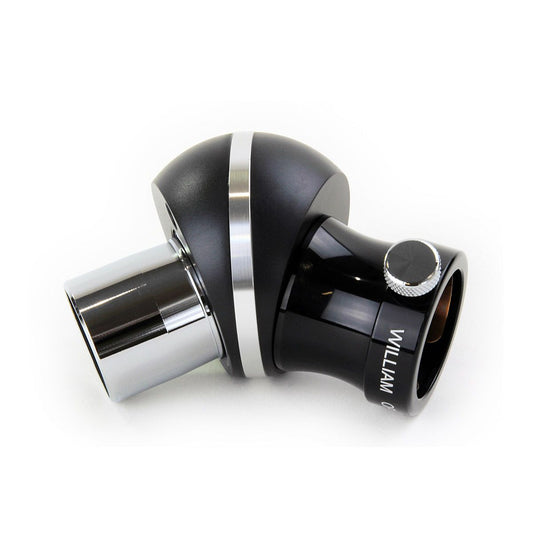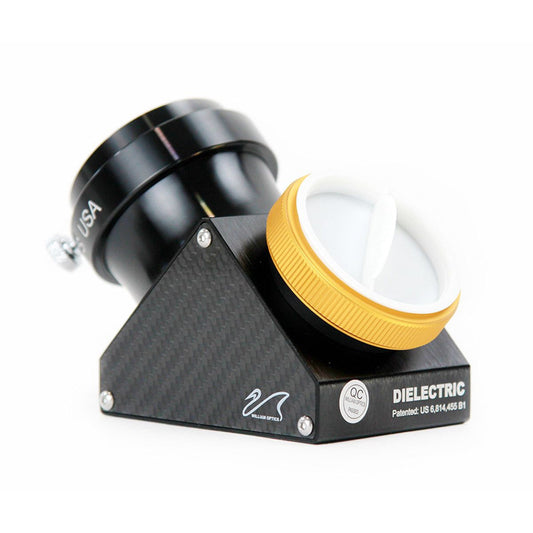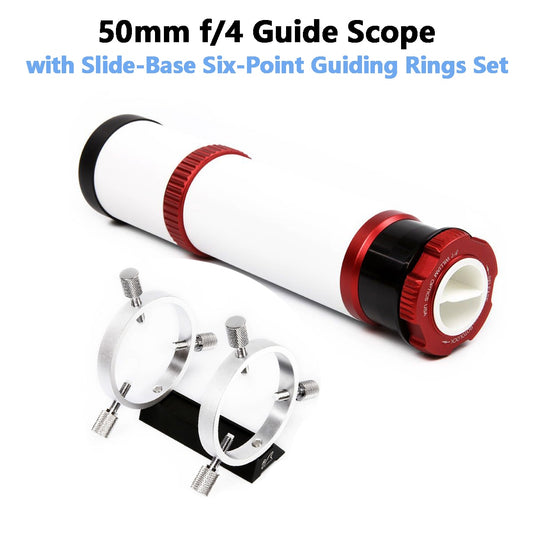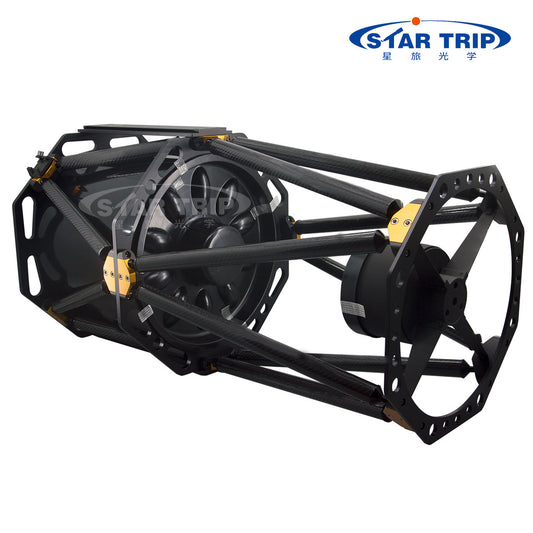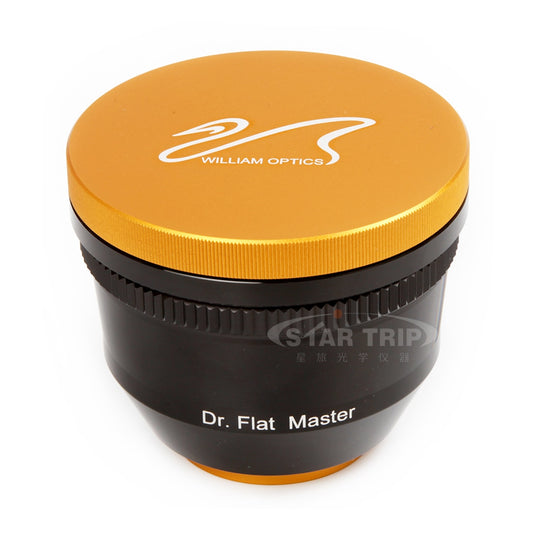Looking for a lightweight, portable, and high-quality astrophotography refractor? The William Optics RedCat 51 is a popular choice among astrophotography enthusiasts. In this blog post, we will explore the features, advantages, and limitations of the RedCat 51, as well as how it compares to other telescopes in its class.

Features
The RedCat 51 is a 51mm f/4.9 refractor telescope designed for astrophotography. It weighs only 1.9kg, making it one of the most portable astrophotography telescopes available. The RedCat 51 features a 2-element air-spaced objective with FPL-53 glass, a Rack & Pinion 2" Focuser, and a sturdy aluminum tube with a retractable dew shield. It comes with a Vixen-style dovetail and a mounting ring, making it easy to mount on any astrophotography mount.
Advantages
One of the main advantages of the RedCat 51 is its portability. Its lightweight and compact design make it easy to transport to your favorite dark sky location or to take it with you on vacation. The RedCat 51 is also a very versatile telescope. It is suitable for wide-field astrophotography, deep-sky imaging, and even daytime photography. Its short focal length and fast aperture make it ideal for wide-field imaging of large celestial objects such as the Milky Way or large nebulae.
The RedCat 51's objective lens is made of high-quality FPL-53 glass, which delivers excellent color correction and sharpness across the entire field of view. The Rack & Pinion 2" Focuser is smooth and precise, allowing for easy and accurate focusing.

Limitations
The main limitation of the RedCat 51 is its small aperture. While its short focal length and fast aperture make it ideal for wide-field astrophotography, it is not suitable for imaging small, faint objects such as galaxies or planetary nebulae. Additionally, the RedCat 51's small aperture means that it has a limited light-gathering capability, making it less suitable for astrophotography in areas with high levels of light pollution.

Comparison
When compared to other astrophotography telescopes in its class, the RedCat 51 stands out for its portability and versatility. Its lightweight and compact design make it easy to transport, and its short focal length and fast aperture make it ideal for wide-field astrophotography. However, other telescopes in its class may have larger apertures, which makes them better suited for imaging faint deep-sky objects.
The William Optics RedCat 51 is a great option for astrophotography enthusiasts who want a compact and portable telescope that delivers high-quality images. It is designed to be easy to set up and use, even for beginners, while still offering advanced features and capabilities for more experienced users.
One of the standout features of the RedCat 51 is its lightweight and portable design. Weighing in at just 1.63 kg, this telescope is easy to transport to remote locations or set up on a tripod for stable imaging. Its compact size also makes it easy to store when not in use, so it won't take up too much space in your home or vehicle.
In terms of optics, the RedCat 51 features a 4-element lens system that provides a sharp and clear image with minimal chromatic aberration. This makes it well-suited for imaging celestial objects like galaxies, nebulae, and star clusters, as well as terrestrial landscapes and wildlife.
The RedCat 51 also comes equipped with a built-in field flattener, which helps to reduce distortion and field curvature in your images. This results in more accurate and precise images, especially when capturing wide-field shots of the night sky.
Another useful feature of the RedCat 51 is its retractable dew shield, which helps to prevent dew buildup on the lens during use. This is especially important for astrophotography, as dew can quickly ruin your images and make it difficult to capture clear and sharp photos.
Overall, the William Optics RedCat 51 is a great choice for astrophotography enthusiasts who value portability and ease of use, while still demanding high-quality images. Its lightweight and compact design, advanced optics, and useful features make it a versatile and reliable tool for capturing stunning images of the night sky.

Specifications
- Aperture: 51 mm
- Focal length: 250 mm
- Focal ratio: f/4.9
- Optical design: Petzval apochromatic refractor
- Lens elements: 4 elements in 2 groups
- Coating: Fully multi-coated
- Focuser: Dual-speed rack and pinion focuser with 1:10 fine focus ratio
- Maximum useful magnification: 102x
- Finder scope: Red Dot Finder
- Tripod compatibility: Mounts on a standard camera tripod (1/4"-20 threads)
- Weight: 1.8 kg (4 lbs)
- Length: 210 mm (8.3 inches)
- Diameter: 70 mm (2.8 inches)
- Accessories included: Soft carry case, Vixen-style dovetail plate, 48mm to 42mm step-down ring, M42 to Canon EF adapter, M42 to Sony E-mount adapter

William Optics RedCat 51 and Competitors
| Telescope Model | Aperture | Focal Length | Focal Ratio | Weight | Mount Type | Field Flattener | Image Circle |
|---|---|---|---|---|---|---|---|
| William Optics RedCat 51 | 51mm | 250mm | f/4.9 | 1.18kg | None | Included | 44mm |
| Sky-Watcher Evoguide 50 | 50mm | 242mm | f/4.8 | 1.27kg | None | Not Included | 28mm |
| Orion AstroView 90mm | 90mm | 910mm | f/10 | 5.9kg | Equatorial | Not Included | N/A |
| Celestron NexStar 6SE | 150mm | 1500mm | f/10 | 10kg | Altazimuth | Not Included | N/A |
| Meade LX90-ACF 8" | 203mm | 2000mm | f/10 | 33kg | Equatorial | Not Included | N/A |
Note: The weight is without mount included, and the image circle is the diameter of the image that the field flattener can cover.

Conclusion:
The William Optics RedCat 51 is a versatile, portable, and high-quality astrophotography refractor. While it may not be the best choice for imaging small, faint objects, its short focal length and fast aperture make it ideal for wide-field astrophotography. Its compact design makes it easy to transport to your favorite dark sky location, and its high-quality FPL-53 glass objective lens delivers excellent color correction and sharpness. If you're in the market for a lightweight and portable astrophotography telescope, the RedCat 51 is definitely worth considering.
Telescope Topics:
- Who Invented The Telescope?
- Why are Telescopes Important?
- When was The Telescope Invented?
- Why are Refractor Telescopes Popular?
- Best Deep Sky Objects by Month
- Best Telescope for Viewing Planets and Galaxies
- Best Telescope to See Planets and Galaxies
- Best Telescope Eyepiece for Viewing Planets
- Reflector Vs Refractor Telescope
- Takahashi Telescopes
- Brightest Objects in the Night Sky
- What Does a Focal Reducer Do on a Telescope
- Ax Telescope Mount
- Types of Telescopes
- Telescope Mounts Explained
- What is a Catadioptric Telescope
- Telescope Aperture
- How Does a Telescope Work
- Are There Telescopes for Smartphone Camera
- How Much Does a Telescope Cost
- Best Telescopes Under $1000
- What Makes a Good Telescope
- What Does a Focal Reducer Do
- Stellarium
- Bahtinov Mask
- Qhyccd Polemaster Review

